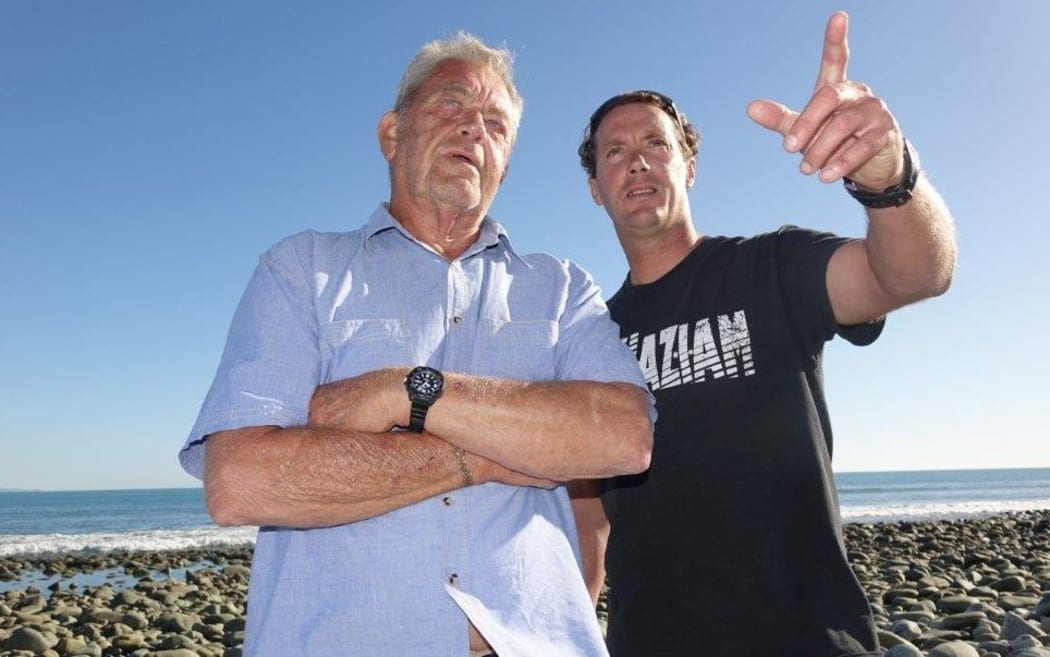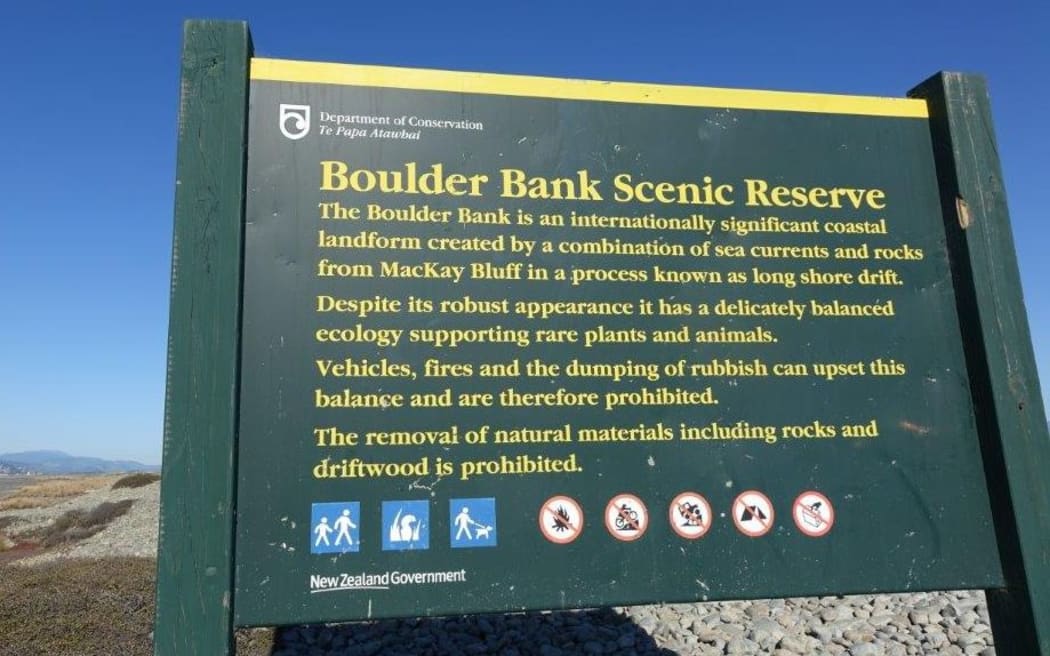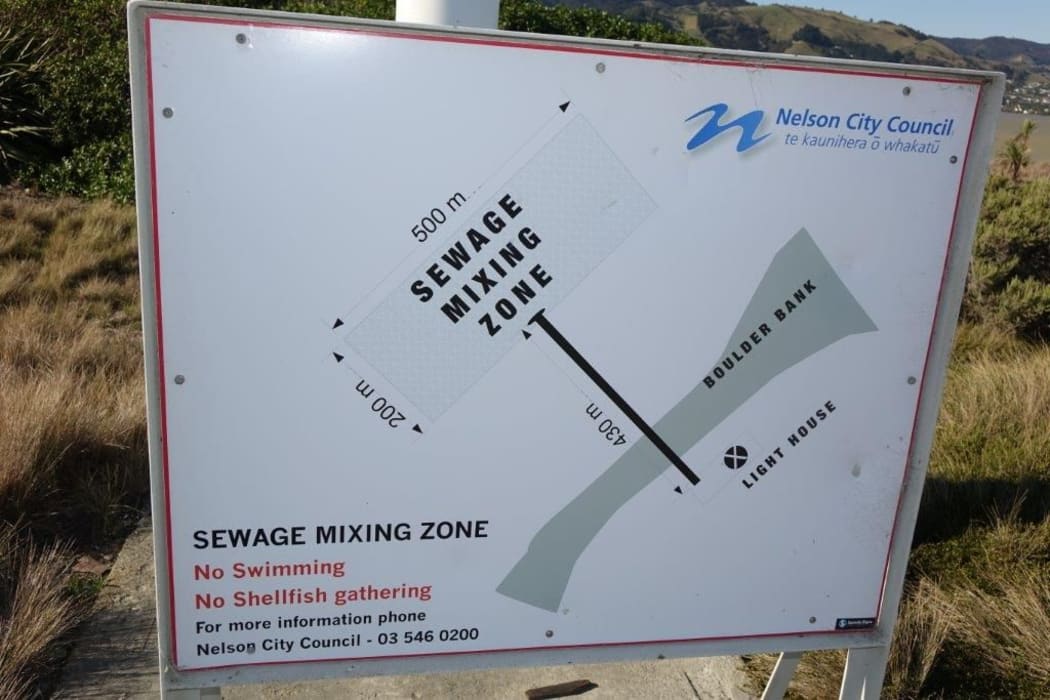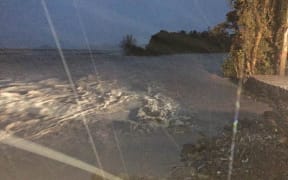Nelson's surfing community is worried about the rising tide of apparently raw sewage near their surf break at Schnappers Point.

Henk Beek, left, and Mark Nichols at Schnappers Point, near Nelson. Photo: RNZ/Tracy Neal
The area on the Boulder Bank north of the city is around 500 metres from the outfall pipe that discharges treated sewage from the nearby plant. Those who swim and surf there say they are seeing things they should not, including Nelson Boardriders Surf Club president Mark Nichols, who has surfed Schnappers for more than a decade.

Nelson's 11km-long naturally formed Boulder Bank features the city's main surf break at Schnappers Point. Photo: RNZ/Tracy Neal
He said there had been a problem for a while, but it was suddenly getting worse, and it looked like the raw sewage was being released straight into water from an outfall.
"Surfers are noticing floating human faeces next to them, bobbing up and down in the water."
Mr Nichols said some of them, including himself, were now getting sick from surfing there.
"I mean, campylobacter, E-coli, giardia - you know, if you're out in the water and taking particles of faeces into your mouth, of course you're going to get sick."
Mr Nichols has headed the 50-year-old surf club for the last 12 years. He did not think that the waste water treatment plant, built by the Nelson City Council, was coping with the effects of population increase and heavy rain storms in recent years.
Last week's rain caused various sewer pump stations around the city to overflow, which led to sewage spilling into the Nelson Haven mudflats. The council banned swimming and shellfish gathering over Easter.
Oxidation ponds were built in the area in 1979 and the $9 million treatment plant was built in 2008. More money was spent in recent years to fix a series of pond failures that left a rotten stench over Nelson.
However, the council's infrastructure manager Alec Louverdis said the plant's multiple treatment processes made it extremely unlikely raw sewage could spill into the sea.
"It passes through pre-screening, a trickling filter, a clarifier, it passes through two series of oxidation ponds, it makes it way through a wetland... no, we don't believe it's possible."
Mr Louverdis said he was also satisfied the plant was working properly, based on the fact it met all resource consent requirements.

The North Nelson Wastewater Treatment Plant has signs showing where the sewage mixing zone is. Photo: RNZ/Tracy Neal
Henk Beek, who surfed at Snappers in the 1960s and lived nearby, was not convinced. He said he believed ratepayers would have supported spending more on the plant back when it was built, had they known about the odour problems they have been confronted with in recent years.
"I don't think the infrastructure has kept up with the growth. This site was probably the only suitable site for a full treatment plant and in another 20 years it's going to cost three times the amount we would have cost if we'd done it now, or 10 years ago."
Mr Beek said spending priority should be on the "must-haves" such as critical infrastructure, and not things like cycleways and walkways.
Mr Nichols said he thought increased volumes of waste from portable toilets that made its way into the ponds meant they were not breaking down properly.
"This is backed up by a few of the surfers saying the water has a kind of chlorinated taste to it sometimes."
Mr Louverdis said he did not believe this was possible either.
"Ever since we've upgraded the ponds, and we've done substantial work on them - we've added aeration, we've de-sludged the ponds. We're adhering to all the resource consent conditions in terms of deliverables and measurables and there's no indication that anything entering into the plant has had an adverse affect on our ability to treat waste water," Mr Louverdis said.
He raised the possibility that the problem could be coming from boats and ships dumping effluent in Tasman Bay.
Mr Nichols said a shoreline listed by New Zealand Heritage as a wahi tapu site was worth looking after.
"Schnappers Point, where the plant is, is the only place to surf in Nelson and it's a really good wave. It seems a shame it gets spoiled."



